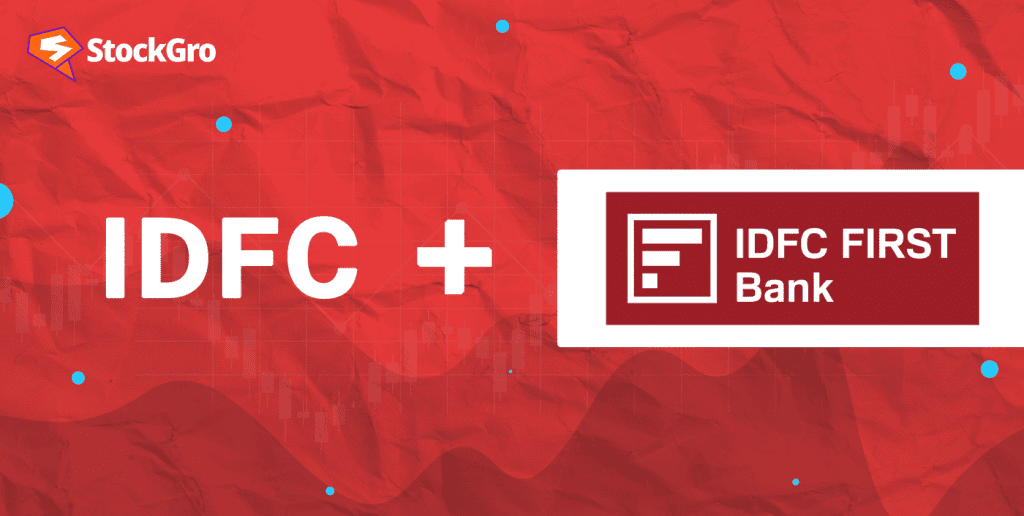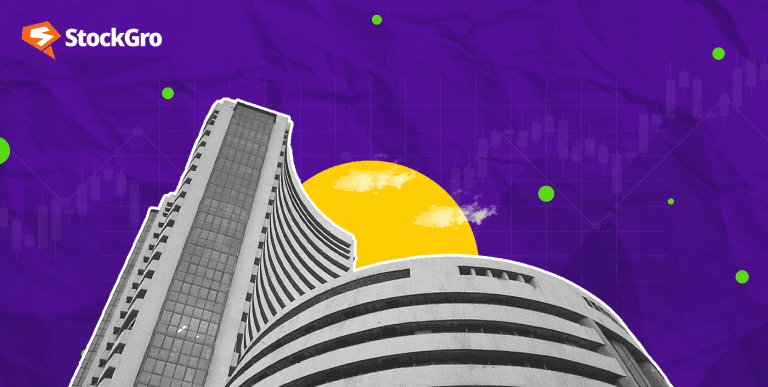
What does the IDFC-First Bank merger mean for you and your investments?
On October 1, 2024, IDFC First Bank completed its much-anticipated merger with IDFC Ltd., bringing new developments for shareholders and simplifying the corporate structure of the bank. For millennials and Gen Z investors keeping a keen eye on the financial market, this merger represents an important shift. In this blog, we’ll break down what this merger means for you as an investor, the opportunities it creates, and the timelines to watch.
The details of the IDFC-First Bank merger
The merger between IDFC Ltd. and IDFC First Bank has been in the works for over two years. After receiving all necessary regulatory and shareholder approvals, the merger became effective on October 1, 2024. But what does this mean in practical terms for investors?
Also read: Mergers vs. Acquisitions – How are they different from one another?
Key timeline and share allocation
As part of the merger deal, shareholders of IDFC Ltd. will receive 155 equity shares of IDFC First Bank for every 100 equity shares they currently hold in IDFC Ltd. This share allocation ratio ensures fair distribution in line with the valuations of both entities.
- Record date: October 10, 2024 – this is the date that determines which shareholders are eligible for the share swap.
- Expected share credit date: October 31, 2024 – shareholders can expect the new shares in their accounts by this date.
Here’s a quick summary of the key dates and facts:
| Key Event | Date | Details |
| Merger completion | October 1, 2024 | Merger between IDFC Ltd. and IDFC First Bank becomes effective. |
| Record date for share swap | October 10, 2024 | Shareholders will receive 155 equity shares of IDFC First Bank for every 100 shares of IDFC Ltd. they hold. |
| Expected share credit date | October 31, 2024 | Shares are expected to be credited to shareholders’ accounts. |
| Cash and cash equivalents | ₹600 crore | Approximately ₹600 crore in cash will flow into IDFC First Bank post-merger, enhancing liquidity. |
How does the IDFC merger simplify the corporate structure?
One of the most important outcomes of this merger is the simplification of the corporate structure. Before the merger, IDFC Ltd. acted as the promoter and holding company for IDFC First Bank.
With the merger complete, the bank no longer has a promoter holding, aligning its structure with other major Indian private banks like ICICI Bank and HDFC Bank. This streamlined approach will not only make operations more transparent but also enable better professional management, improving governance and accountability.
You may also read: Guide to understanding the conglomerate merger
Dividend potential: A major win for investors
One of the most exciting prospects for investors post-merger is the possibility of dividend payments. IDFC First Bank has not paid dividends in recent years due to legacy losses.
However, following the merger, these accumulated losses will be offset against the bank’s Securities Premium Account. This paves the way for IDFC First Bank to distribute dividends in the near future—a significant positive for shareholders looking for steady returns.
Here’s why dividend payments might be back on the table:
- Restructured finances: The bank’s accumulated losses will be cleared out due to the merger, unlocking the ability to declare dividends.
- Strong liquidity: The merger will bring ₹600 crore in cash and cash equivalents into IDFC First Bank, further strengthening the bank’s balance sheet.
What does this mean for your portfolio?
If you’re a long-term investor, this is a great opportunity to benefit from potential future dividend payments. Dividend payments signal a company’s financial health and can offer you steady returns on your investments, especially if you are holding IDFC First Bank shares post-merger.
You may also like: The mega merger of HDFC and HDFC Bank
What to watch for after the merger
The IDFC-First merger is not just about simplified structure and dividends. For shareholders, the focus should now shift to how IDFC First Bank performs in the coming quarters. Here are some key areas to keep an eye on:
- Stock performance: Following the merger announcement, shares of IDFC First Bank closed 0.22% higher at ₹74.19. The bank currently has a market capitalisation of ₹55,514.39 crore. Investors should watch how the stock performs post-merger, especially as market sentiment settles.
- Growth strategy: The bank has already demonstrated strong performance in digital and ethical banking practices. Post-merger, the focus will likely shift to expanding lending capacity, improving operational efficiency, and leveraging new capital for growth. As the bank strengthens, its long-term growth prospects could also drive stock price appreciation.
- Regulatory clearances: While most of the regulatory approvals have been secured, some formalities are expected to be completed by the end of October 2024. Investors should stay updated on these developments, as any delays could impact timelines for share allotment.
Also read: Sony-Zee merger terminated
How should investors approach this merger?
Whether you’re already holding shares of IDFC First Bank or planning to invest, this merger presents a strategic opportunity. The newly simplified structure, enhanced professional governance, and potential for dividends all make the bank a more attractive investment.
However, like any market shift, it’s crucial to assess your own risk tolerance and investment horizon before making any decisions.
Final thoughts
The IDFC-First Bank merger signals the beginning of a new era for both the bank and its shareholders. For millennial and Gen Z investors looking to grow their portfolios, this merger opens doors to dividend opportunities, a stronger balance sheet, and a more streamlined corporate structure. With shares set to be credited by the end of October, now is a great time to evaluate your position and plan ahead.

